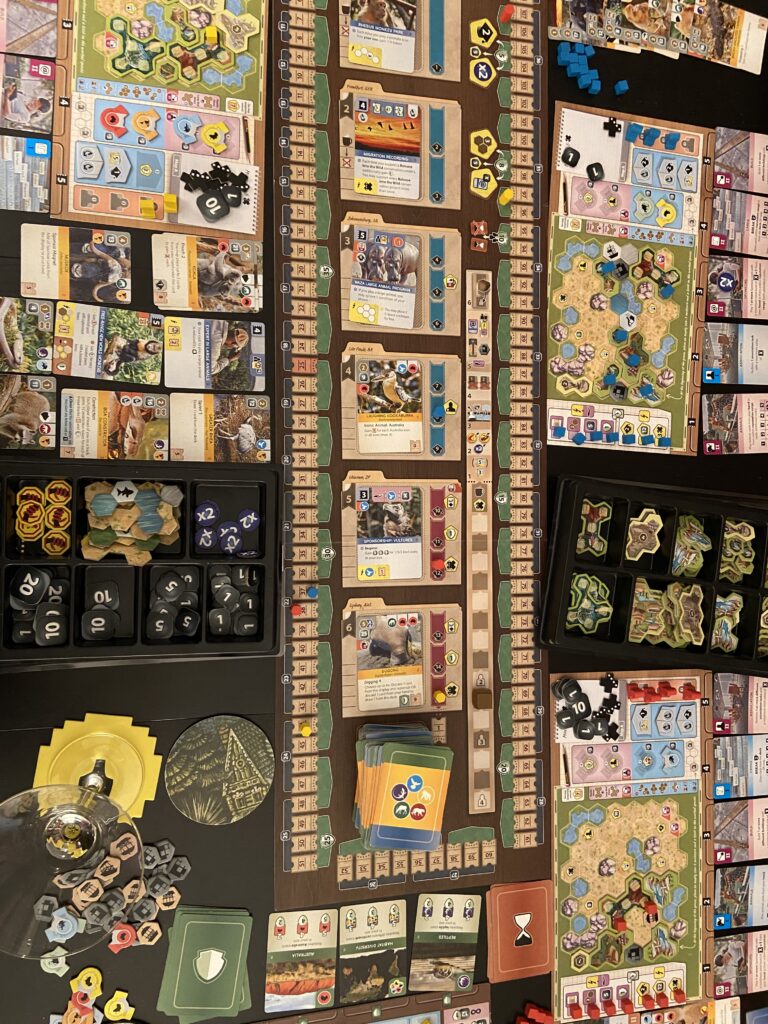This is a series of posts where I play 100 boardgames.

Game: Ark Nova
Designer: Mathias Wigge
Year: 2021
Country: Germany
Publisher: Feuerland Spiele
According to Boardgamegeek, Ark Nova is the third best boardgame in the world, sharing the top of the ranking list with other similarly complex games. The players run rival zoos, seeking to best each other through the proper balancing of popularity and support for conservation efforts. It took us two hours to learn enough rules that the game was flowing smoothly and it was possible to make informed decisions. Total playtime was six and a half hours.
There’s a central board which features tracks to keep score of each zoo’s popularity and conservation efforts, as well as hold cards. The real action happens at the personal mini-boards of each player, showing a map of their zoo. As a player, you build enclosures for animals, play animal cards into appropriate enclosures, collaborate with universities and zoos on different continents.
The game runs on five core actions, one of which each player can take on their turn. The actions each have a card which switches position when they’re used so that the longer you wait to use a card, the more useful it is. This design choice creates a natural incentive to make various actions, particularly in the early game.
The game ended up as a massive sprawl which covered most of my living room table but the learning process wasn’t particularly difficult because like in many games, complexity increases as play progresses. In the beginning, options are few so choices are not that hard.
Although the game is competitive with a winner and a bunch of losers, it felt genteel in spirit. For much of the game, I was looking at my own zoo board, only paying attention to what others were doing if it impacted my choices. The players can sabotage each other in small ways but it didn’t feel like a major aspect of the experience.
One curious aspect of the design is the relationship between the popularity track and the conservation track in the final scoring. The goal was to have as high a conservation number as possible in relation to the popularity number, so at a certain point you no longer wanted to see popularity go up. Instead, to win you needed as many things as possible to adjust the conservation rating in the final scoring but not before. This is because the game ended when these two tracks met on the board.
As this was my first game of Ark Nova, I didn’t quite grasp this aspect of the game until the end, and there was some confusion at the final tally. Like the last game I played, Spirit Island, Ark Nova features ideas that go beyond just creating a fun experience. This time, the game features ideas of conservation and being a responsible zookeeper which it takes pretty seriously both in the thematic material and in the system design. To really get into this part of the experience, I’ll need to play it again.